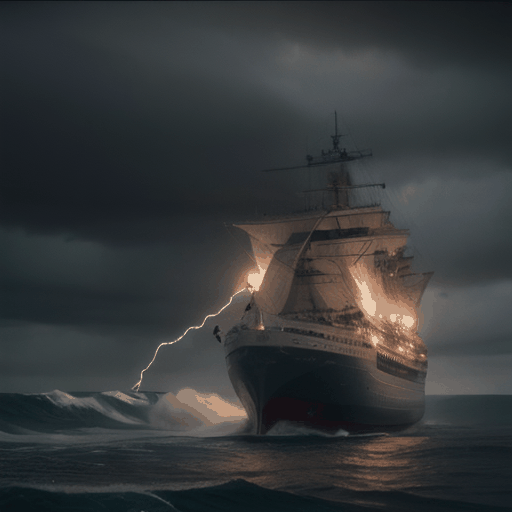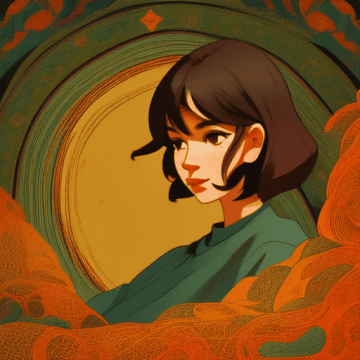animatediff-illusions
Maintainer: zsxkib

9

| Property | Value |
|---|---|
| Run this model | Run on Replicate |
| API spec | View on Replicate |
| Github link | View on Github |
| Paper link | View on Arxiv |
Create account to get full access
Model overview
animatediff-illusions is an AI model created by Replicate user zsxkib that combines AnimateDiff, ControlNet, and IP-Adapter to generate animated images. It allows for prompts to be changed in the middle of an animation sequence, resulting in surprising and visually engaging effects. This sets it apart from similar models like instant-id-multicontrolnet, animatediff-lightning-4-step, and magic-animate which focus more on general image animation and video synthesis.
Model inputs and outputs
animatediff-illusions takes a variety of inputs to generate animated images, including prompts, control networks, and configuration options. The model outputs animated GIFs, MP4s, or WebM videos based on the provided inputs.
Inputs
- Prompt: The text prompt that describes the desired content of the animation. This can include fixed prompts as well as prompts that change over the course of the animation.
- ControlNet: Additional inputs that provide control over specific aspects of the generated animation, such as region, openpose, and tile.
- Configuration options: Settings that affect the animation generation process, such as the number of frames, resolution, and diffusion scheduler.
Outputs
- Animated images: The model outputs animated images in GIF, MP4, or WebM format, based on the provided inputs.
Capabilities
animatediff-illusions can generate a wide variety of animated images, from surreal and fantastical scenes to more realistic animations. The ability to change prompts mid-animation allows for unique and unexpected results, creating animations that are both visually striking and conceptually intriguing. The model's use of ControlNet and IP-Adapter also enables fine-grained control over different aspects of the animation, such as the background, foreground, and character poses.
What can I use it for?
animatediff-illusions could be used for a variety of creative and experimental applications, such as:
- Generating animated art and short films
- Creating dynamic backgrounds or animated graphics for websites and presentations
- Experimenting with visual storytelling and surreal narratives
- Producing animated content for social media, gaming, or other interactive media
The model's versatility and ability to produce high-quality animations make it a powerful tool for artists, designers, and creatives looking to push the boundaries of what's possible with AI-generated visuals.
Things to try
One interesting aspect of animatediff-illusions is the ability to change prompts mid-animation, which can lead to unexpected and visually striking results. Users could experiment with this feature by crafting a sequence of prompts that create a sense of narrative or visual transformation over the course of the animation.
Another intriguing possibility is to leverage the model's ControlNet and IP-Adapter capabilities to create animations that seamlessly blend various visual elements, such as realistic backgrounds, stylized characters, and abstract motifs. By carefully adjusting the control parameters and prompt combinations, users can explore the rich creative potential of this model.
Overall, animatediff-illusions offers a unique and powerful tool for those seeking to push the boundaries of AI-generated animation and visual storytelling.
This summary was produced with help from an AI and may contain inaccuracies - check out the links to read the original source documents!
Related Models

animatediff-prompt-travel

5
animatediff-prompt-travel is an experimental feature added to the open-source AnimateDiff project by creator zsxkib. It allows users to seamlessly navigate and animate between text-to-image prompts, enabling the creation of dynamic visual narratives. This model builds upon the capabilities of AnimateDiff, which utilizes ControlNet and IP-Adapter to generate animated content. Model inputs and outputs animatediff-prompt-travel focuses on the input and manipulation of text prompts to drive the animation process. Users can define a sequence of prompts that will be used to generate the frames of the animation, with the ability to transition between different prompts mid-frame. Inputs Prompt Map**: A set of prompts, where each prompt is associated with a specific frame number in the animation. Head Prompt**: The primary prompt that sets the overall tone and theme of the animation. Tail Prompt**: Additional text that is appended to the end of each prompt in the prompt map. Negative Prompt**: A set of terms to exclude from the generated images. Guidance Scale**: A parameter that controls how closely the generated images adhere to the provided prompts. Various configuration options**: For selecting the base model, scheduler, resolution, frame count, and other settings. Outputs Animated video in various formats, such as GIF, MP4, or WebM. Capabilities animatediff-prompt-travel enables users to create dynamic and evolving visual narratives by seamlessly transitioning between different text prompts throughout the animation. This allows for more complex and engaging storytelling, as the scene and characters can change and transform over time. The model also integrates various advanced features, such as the use of ControlNet and IP-Adapter, to provide fine-grained control over the generated imagery. This includes the ability to apply region-specific prompts, incorporate external images as references, and leverage different preprocessing techniques to enhance the animation quality. What can I use it for? animatediff-prompt-travel can be particularly useful for creating animated content that tells a story or conveys a narrative. This could include animated short films, video essays, educational animations, or dynamic visual art pieces. The ability to seamlessly transition between prompts allows for more complex and engaging visual narratives, as the scene and characters can evolve over time. Additionally, the model's integration with advanced features like ControlNet and IP-Adapter opens up possibilities for more specialized applications, such as character animation, visual effects, or even data visualization. Things to try One interesting aspect of animatediff-prompt-travel is the ability to experiment with different prompt sequences and transitions. Users can try creating contrasting or complementary prompts, exploring how the generated imagery changes and develops over the course of the animation. Another area to explore is the use of external image references through the IP-Adapter feature. This can allow users to integrate real-world elements or specific visual styles into the generated animations, creating a unique blend of the generated and referenced imagery. Additionally, the model's compatibility with various ControlNet modules, such as OpenPose and Tile, provides opportunities to experiment with different visual effects and preprocessing techniques, potentially leading to novel animation styles or techniques.
Updated Invalid Date

animate-diff

46
animate-diff is a plug-and-play module developed by Yuwei Guo, Ceyuan Yang, and others that can turn most community text-to-image diffusion models into animation generators, without the need for additional training. It was presented as a spotlight paper at ICLR 2024. The model builds on previous work like Tune-a-Video and provides several versions that are compatible with Stable Diffusion V1.5 and Stable Diffusion XL. It can be used to animate personalized text-to-image models from the community, such as RealisticVision V5.1 and ToonYou Beta6. Model inputs and outputs animate-diff takes in a text prompt, a base text-to-image model, and various optional parameters to control the animation, such as the number of frames, resolution, camera motions, etc. It outputs an animated video that brings the prompt to life. Inputs Prompt**: The text description of the desired scene or object to animate Base model**: A pre-trained text-to-image diffusion model, such as Stable Diffusion V1.5 or Stable Diffusion XL, potentially with a personalized LoRA model Animation parameters**: Number of frames Resolution Guidance scale Camera movements (pan, zoom, tilt, roll) Outputs Animated video in MP4 or GIF format, with the desired scene or object moving and evolving over time Capabilities animate-diff can take any text-to-image model and turn it into an animation generator, without the need for additional training. This allows users to animate their own personalized models, like those trained with DreamBooth, and explore a wide range of creative possibilities. The model supports various camera movements, such as panning, zooming, tilting, and rolling, which can be controlled through MotionLoRA modules. This gives users fine-grained control over the animation and allows for more dynamic and engaging outputs. What can I use it for? animate-diff can be used for a variety of creative applications, such as: Animating personalized text-to-image models to bring your ideas to life Experimenting with different camera movements and visual styles Generating animated content for social media, videos, or illustrations Exploring the combination of text-to-image and text-to-video capabilities The model's flexibility and ease of use make it a powerful tool for artists, designers, and content creators who want to add dynamic animation to their work. Things to try One interesting aspect of animate-diff is its ability to animate personalized text-to-image models without additional training. Try experimenting with your own DreamBooth models or models from the community, and see how the animation process can enhance and transform your creations. Additionally, explore the different camera movement controls, such as panning, zooming, and rolling, to create more dynamic and cinematic animations. Combine these camera motions with different text prompts and base models to discover unique visual styles and storytelling possibilities.
Updated Invalid Date

illusion-diffusion-hq

347
The illusion-diffusion-hq model is a variant of the popular Stable Diffusion text-to-image AI model, developed by lucataco and built on top of the Realistic Vision v5.1 model. It incorporates Monster Labs' QR code control net, allowing users to generate QR codes and embed them into their generated images. This model can be seen as an extension of other ControlNet-based models like sdxl-controlnet, animatediff-illusions, and controlnet-1.1-x-realistic-vision-v2.0, all of which leverage ControlNet technology to enhance their image generation capabilities. Model inputs and outputs The illusion-diffusion-hq model takes a variety of inputs, including a text prompt, an optional input image, and various parameters to control the generation process. These inputs allow users to fine-tune the output and shape the generated image to their desired specifications. The model then outputs one or more high-quality images based on the provided inputs. Inputs Prompt**: The text prompt that guides the image generation process. Image**: An optional input image that the model can use as a reference or starting point for the generation. Seed**: A numerical seed value that can be used to ensure reproducibility of the generated image. Width/Height**: The desired width and height of the output image. Num Outputs**: The number of images to generate. Guidance Scale**: A parameter that controls the influence of the text prompt on the generated image. Negative Prompt**: A text prompt that specifies elements to be avoided in the generated image. QR Code Content**: The website or content that the generated QR code will point to. QR Code Background**: The background color of the raw QR code. Num Inference Steps**: The number of diffusion steps used in the generation process. ControlNet Conditioning Scale**: A parameter that controls the influence of the ControlNet on the final output. Outputs Generated Images**: One or more high-quality images that reflect the provided inputs and prompt. Capabilities The illusion-diffusion-hq model is capable of generating high-quality images with embedded QR codes, which can be useful for a variety of applications, such as creating interactive posters, product packaging, or augmented reality experiences. The model's ability to incorporate ControlNet technology allows for more precise control over the generated images, enabling users to fine-tune the output to their specific needs. What can I use it for? The illusion-diffusion-hq model can be used for a variety of creative and practical applications, such as: Interactive Media**: Generate images with embedded QR codes that link to websites, videos, or other digital content, creating engaging and immersive experiences. Product Packaging**: Design product packaging with QR codes that provide additional information, tutorials, or purchase links for customers. Augmented Reality**: Integrate the generated QR code images into augmented reality applications, allowing users to interact with digital content overlaid on the physical world. Marketing and Advertising**: Create visually striking and interactive marketing materials, such as posters, flyers, or social media content, by incorporating QR codes into the generated images. Things to try Experiment with different text prompts, input images, and parameter settings to see how they affect the generated QR code images. Try incorporating the QR codes into various design projects or using them to unlock digital content for an added layer of interactivity. Additionally, explore how the model's ControlNet capabilities can be leveraged to fine-tune the output and achieve your desired results.
Updated Invalid Date

illusion

298
The illusion model is an implementation of Monster Labs' QR code control net on top of Stable Diffusion 1.5, created by maintainer andreasjansson. It is designed to generate creative yet scannable QR codes. This model builds upon previous ControlNet models like illusion-diffusion-hq, controlnet_2-1, controlnet_1-1, and control_v1p_sd15_qrcode_monster to provide further improvements in scannability and creativity. Model inputs and outputs The illusion model takes in a variety of inputs to guide the QR code generation process, including a prompt, seed, image, width, height, number of outputs, guidance scale, negative prompt, QR code content, background color, number of inference steps, and conditioning scale. The model then generates one or more QR codes that can be scanned and link to the specified content. Inputs Prompt**: The prompt to guide QR code generation Seed**: The seed to use for reproducible results Image**: An input image, if provided (otherwise a QR code will be generated) Width**: The width of the output image Height**: The height of the output image Number of outputs**: The number of QR codes to generate Guidance scale**: The scale for classifier-free guidance Negative prompt**: The negative prompt to guide image generation QR code content**: The website/content the QR code will point to QR code background**: The background color of the raw QR code Number of inference steps**: The number of diffusion steps ControlNet conditioning scale**: The scaling factor for the ControlNet outputs Outputs Output images**: One or more generated QR code images Capabilities The illusion model is capable of generating creative yet scannable QR codes that can seamlessly blend the image by using a gray-colored background. It provides an upgraded version of the previous Monster Labs QR code ControlNet model, with improved scannability and creativity. Users can experiment with different prompts, parameters, and the image-to-image feature to achieve their desired QR code output. What can I use it for? The illusion model can be used to generate unique and visually appealing QR codes for a variety of applications, such as marketing, branding, and artistic projects. The ability to create scannable QR codes with creative designs can make them more engaging and memorable for users. Additionally, the model's flexibility in allowing users to specify the QR code content and customize various parameters can be useful for both personal and professional projects. Things to try One interesting aspect of the illusion model is the ability to balance scannability and creativity by adjusting the ControlNet conditioning scale. Higher values will result in more readable QR codes, while lower values will yield more creative and unique designs. Users can experiment with this setting, as well as the other input parameters, to find the right balance for their specific needs. Additionally, the image-to-image feature can be leveraged to improve the readability of generated QR codes by decreasing the denoising strength and increasing the ControlNet guidance scale.
Updated Invalid Date